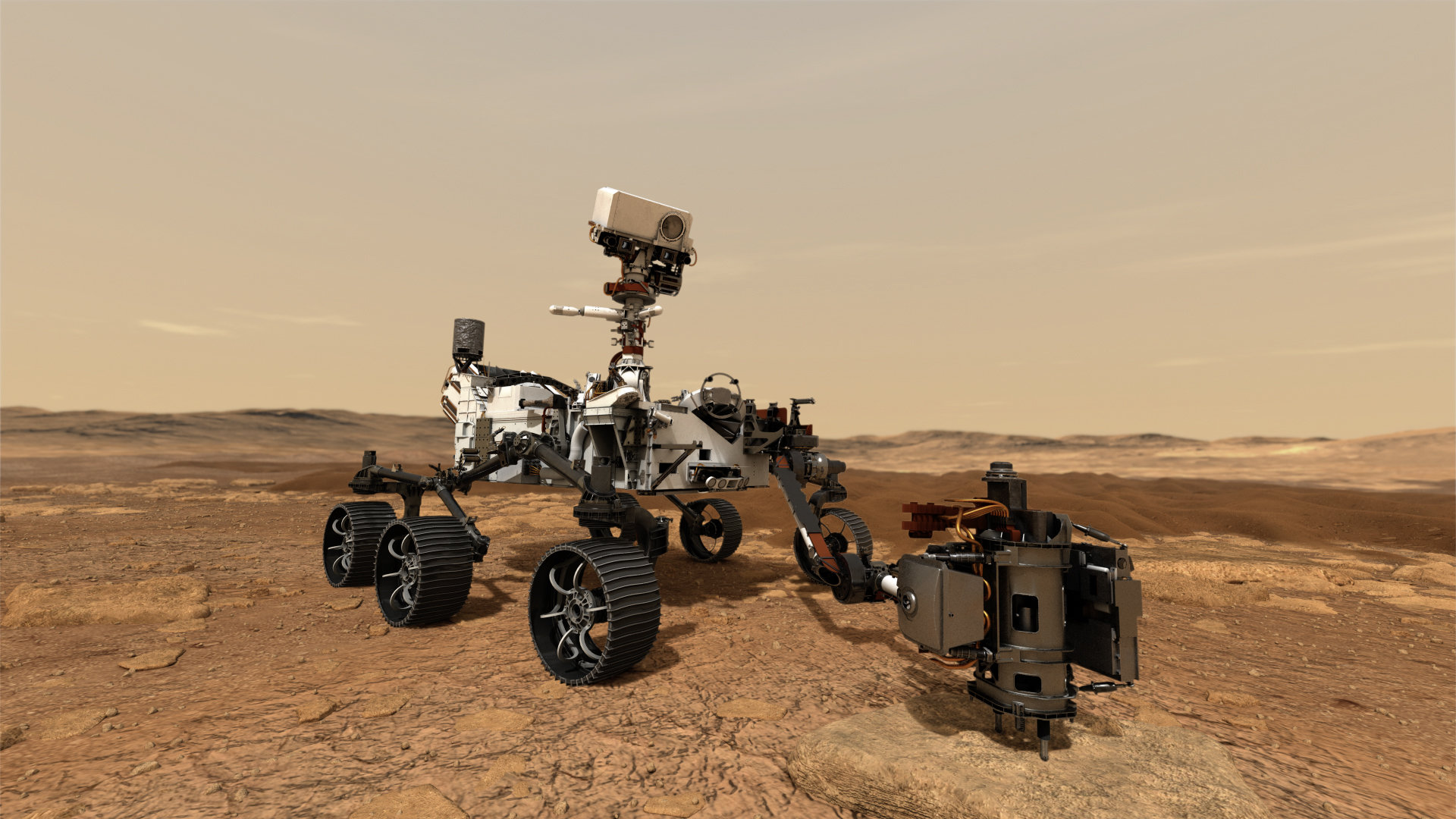QUT students will soon be looking for early life in ancient Australian rocks to help guide the NASA Perseverance Rover in its mission to find ancient life on Mars.
- QUT students and staff will be studying ancient Australian rocks to help guide the Mars Perseverance rover mission
- This is the first Mars mission to have the key task of searching for actual signs of past microbial life
- The Mars rover will select samples that will be returned to Earth by a future mission
The Perseverance Rover (Mars 2020), which has a launch window of July 30 to August 15, is the first Mars mission to have the key astrobiology task of the search for actual signs of past microbial life, as well as caching samples for eventual return to Earth.
The rover is due to land on Mars in February next year, and the mission is due to last at least one Mars year (687 Earth days).
 The upcoming research project to analyse 2.8 billion-year-old rocks from the Pilbara region in Western Australia is the latest addition to the involvement QUT staff and students are having in Mars exploration. The QUT researchers will use the Central Analytical Research Facility (CARF) to analyse the rocks.
The upcoming research project to analyse 2.8 billion-year-old rocks from the Pilbara region in Western Australia is the latest addition to the involvement QUT staff and students are having in Mars exploration. The QUT researchers will use the Central Analytical Research Facility (CARF) to analyse the rocks.
A former NASA scientist now based at QUT’s School of Earth and Atmospheric Sciences, Adjunct Professor David Flannery is a member of the Perseverance science team, a Long Term Planner for the mission, and a Co-Investigator of a rock chemistry instrument aboard the rover which is led by QUT alumnus Dr Abigail Allwood at NASA Jet Propulsion Lab (JPL).
PIXL is an elemental chemistry instrument on the arm of the Perseverance rover which will determine the composition of Mars rock, looking for signs of ancient microbial life in the rocks and helping to characterise samples for caching.
Professor Flannery said QUT researchers would be receiving data from the Mars rover during the mission, which would provide opportunities for existing and future higher degree research students to participate directly in the robotic exploration of Mars.
“Here on Earth we will be looking at rocks that are similar to the rocks we have at the landing site, and studying them with the same techniques we will be using on the rover,” Professor Flannery said.
“In Australia, in the really old rocks that we have, we can see clear evidence that microbes were inhabiting shallow water environments.
“So, when we go through the process of studying these rocks on Mars, we can guide the study of these rocks based on what we’ve learned on Earth.
“There is a potential for students here to be helping out with the operations of the rovers, which is a big opportunity that you just don’t normally get in Australia.”
Vanessa Zepeda, a doctoral student in astrobiology, will be working with Professor Flannery on the project. Ms Zepeda moved to Brisbane from the United States earlier this year, after an opportunity to do her PhD with Professor Flannery came up while she was working at NASA’s JPL in California.
“Understanding the origin and evolution of life on Earth and applying that knowledge to the search of life beyond our planet is the most exciting thing I think I can dedicate my life to,” Ms Zepeda said.
“It is really amazing to be a part of the team that is trying to answer one of the world’s most profound questions.
“The timing of it is incredibly amazing. I feel like I’ve been in the right place at the right time.
“The most exciting thing for me in doing astrobiology research is answering that profound question of whether or not life can arise somewhere else in our solar system. I feel very, very lucky to be offered this opportunity to be involved with Mars research.”
Associate Professor Thierry Peynot said the project would also take input from the QUT Centre for Robotics, which leads world-class research into creating robots that see and understand the world around them, especially in challenging environments such as Mars.
The job of the Perseverance rover’s science team is to select samples that will be returned to Earth by a future mission which has been described by planetary scientists as one of the most important robotic space missions of the foreseeable future because of the scientific information it will provide.
Plans for space missions to retrieve rocks from Mars for scientific study back on Earth date back to the 1970s, but there are complexities involved in the undertaking.
To retrieve rocks from Mars, the mission would need an orbiter vehicle capable of returning to Earth, a rover to collect the samples, and an ascent vehicle able to transport the rock samples from the surface of Mars to the orbiter.
But before future missions can bring any rocks back from Mars, scientists need to identify and cache rock samples that are most likely to give key insights – and that is the focus of this mission.
The Mars 2020 Rover is due to land on Mars in Jezero Crater, which was once flooded with water. Professor Flannery and his team of researchers are hoping to find biosignatures of past life.
“This is an opportunity to address the biggest question in science potentially and make one of the biggest scientific discoveries of all time,” Professor Flannery said.
Applications are now open for Masters and PhD projects to work with Professor Flannery (david.flannery@qut.edu.au).
Media contact:
Rod Chester, QUT Media, 07 3138 9449, rod.chester@qut.edu.au
After hours: Rose Trapnell, 0407 585 901, media@qut.edu.au




